Designing the 2020 Hugo Awards
Last modified
It was an honour to have my trophy base design chosen for the 2020 Hugo Awards. I've been a fan of science fiction since childhood when my father would tell me about the stories written by Asimov, Bova, Dickson, and Heinlein. As I got older I got great pleasure from reading their books. It is my hope that the recipients of this years' awards take it as a symbol of their fans appreciation of all that they do and it encourages them to continue to enrich our lives. I designed the trophy in my own time but the manufacture was done by the company I work for - Trophy Specialists & Engraving.
The brief:-
- The theme is "Exploration and Discovery”
- A strong New Zealand influence is required
- Native materials such as native timber or Oamaru stone would be welcome
The design process started with going to the Hugo Award website and looking at trophies from previous years. Then I looked at artwork used by CoNZealand for their website. The spiral design isn't mine! It comes straight from the website banner (below). The shape of spiral arms was inspired by the unfurling of fern fronds - of which New Zealand has many endemic species.

A laser was used to cut the spiral from native materials. Laminated pāua (abalone) shell sheets were sourced from a Ocean Shell Studios in Riverton. Rimu timber was recycled from a building being demolished across the road.
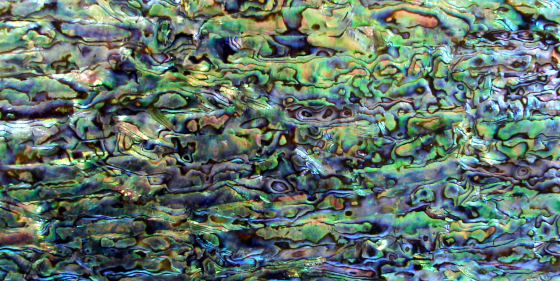
This design was created in Inkscape and sandblasted into the black glass base.
Around the base of the trophy are golden hands in various poses. Ancient people were able to navigate large distances by measuring the distance between celestial objects and the horizon. New Zealand was first settled by Māori using this method to sail the Pacific Ocean. You can try this method yourself by using your fingers to estimate the time till the sun sets. Hold your hand out at arms length and place your pinky on the horizon, then add fingers on top of it until you reach the bottom of the sun. Each finger is fifteen minutes, so if the sun is eight fingers away then the sun will set in two hours.
The silver dots mark the Matariki (Pleides) star cluster. In Māori tradition the first rising of the stars prior to dawn indicates the start of a new year. This happens in late May or early June at the onset of winter in the Southern hemisphere. Some people use nine stars to represent the cluster, others seven.
We wrapped the black, glass base with a vinyl mask and blasted it with sand to engrave it. The colour comes from a metallic paint wiped in using a sponge.
Plaques were made for the 2020 Hugo Awards as well as the 1945 Retro Hugo Awards (designed by James Brown). The plaques are aluminium 'printed' using the sublimation method. A heat press is used to transfer ink printed on paper to a special coating on the aluminium.
For consistency I reused the font Good Times and colours from the logo for the title and categories. For the winners' details I chose the easily readable Fira Sans font and tweaked the font size to suit each plaque.
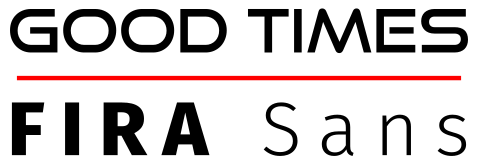
The base was laser engraved with the following explanation of the symbols on the trophy:-
"As we look to the stars let us be inspired by explorers like Kupe and Tasman. Who went before us to discover new lands in the South Pacific.
The star cluster on this trophy can be seen all round the earth. It is known in New Zealand as Matariki. when it precedes the dawn late in may, or early in June, it heralds the start of a new year. Māori used these stars, and others, to navigate the Pacific. Measuring the angle between the stars and the horizon with parts of the hand. 1°, 5°, 10°, 15°, and 25° are depicted in gold.
The design on the top of the base represents the Milky Way and was inspired by traditional Māori patterns based on the unfurling fronds of the many endemic ferns. It has been made of rimu timber and pāua shell."
Screenshot from Blender of 2020 Hugo Award concept.
Screenshot from Blender of 2020 Hugo Award concept from below.

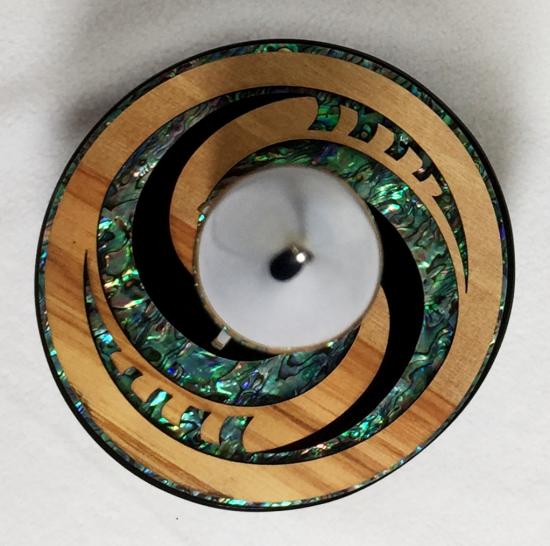




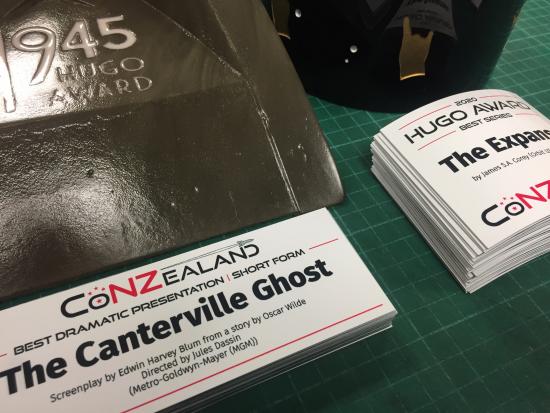
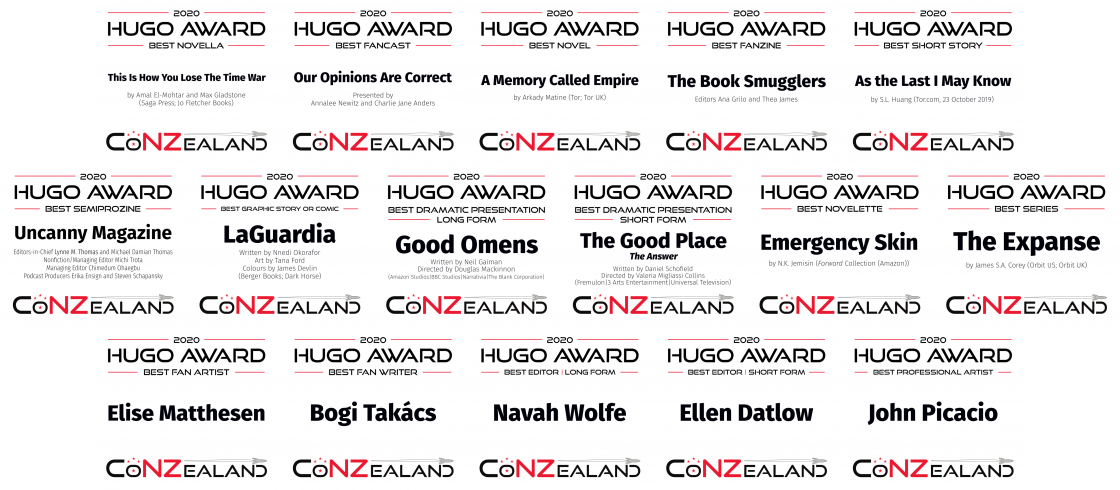
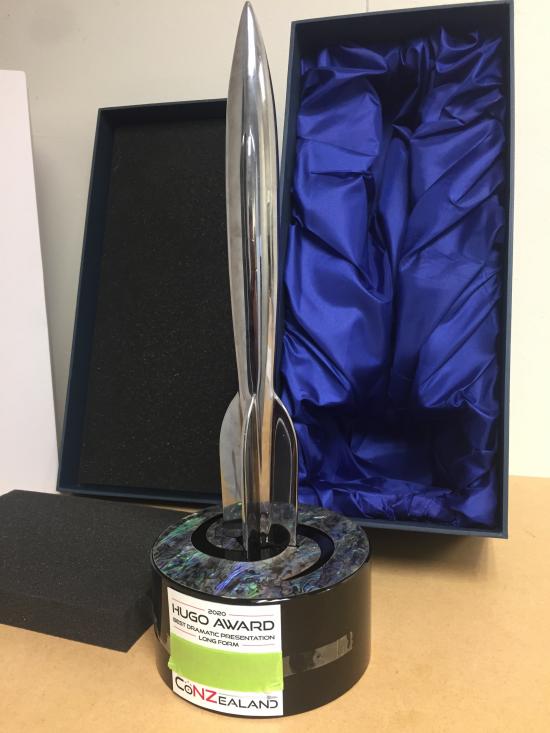

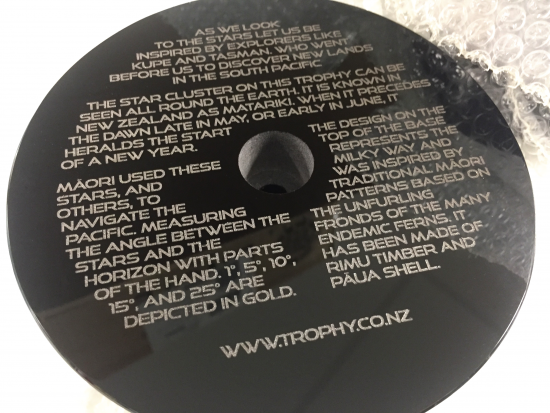
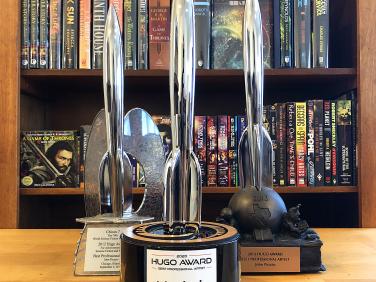
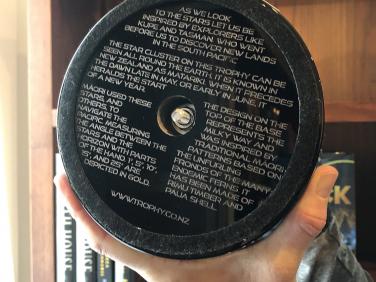
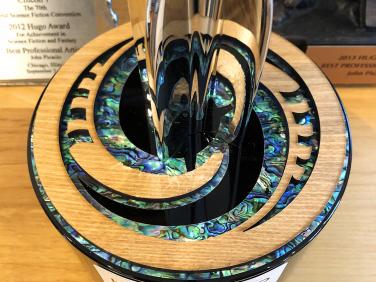
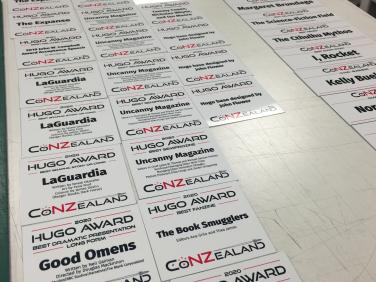
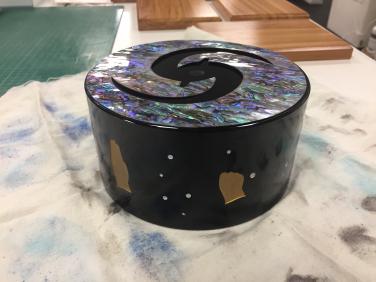
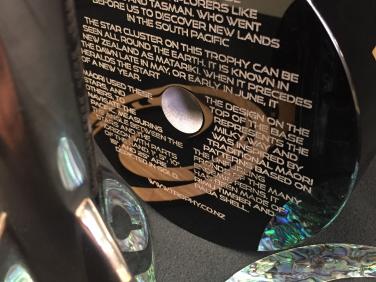
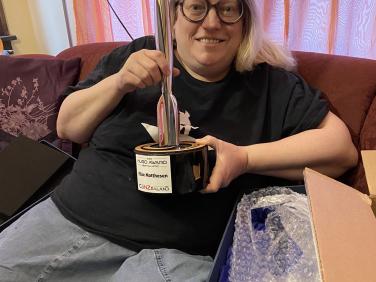

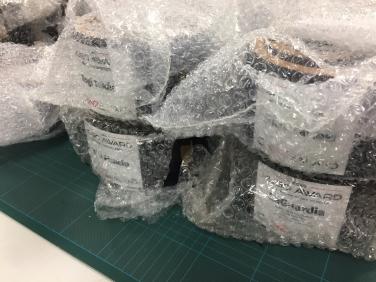
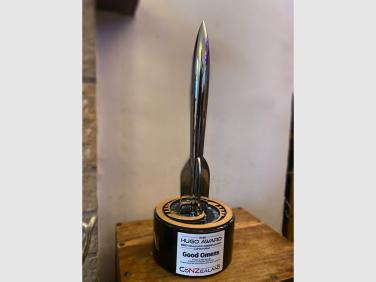
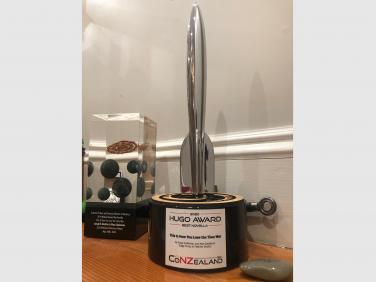
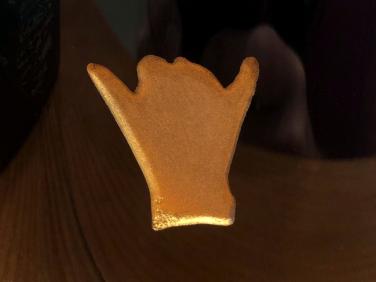
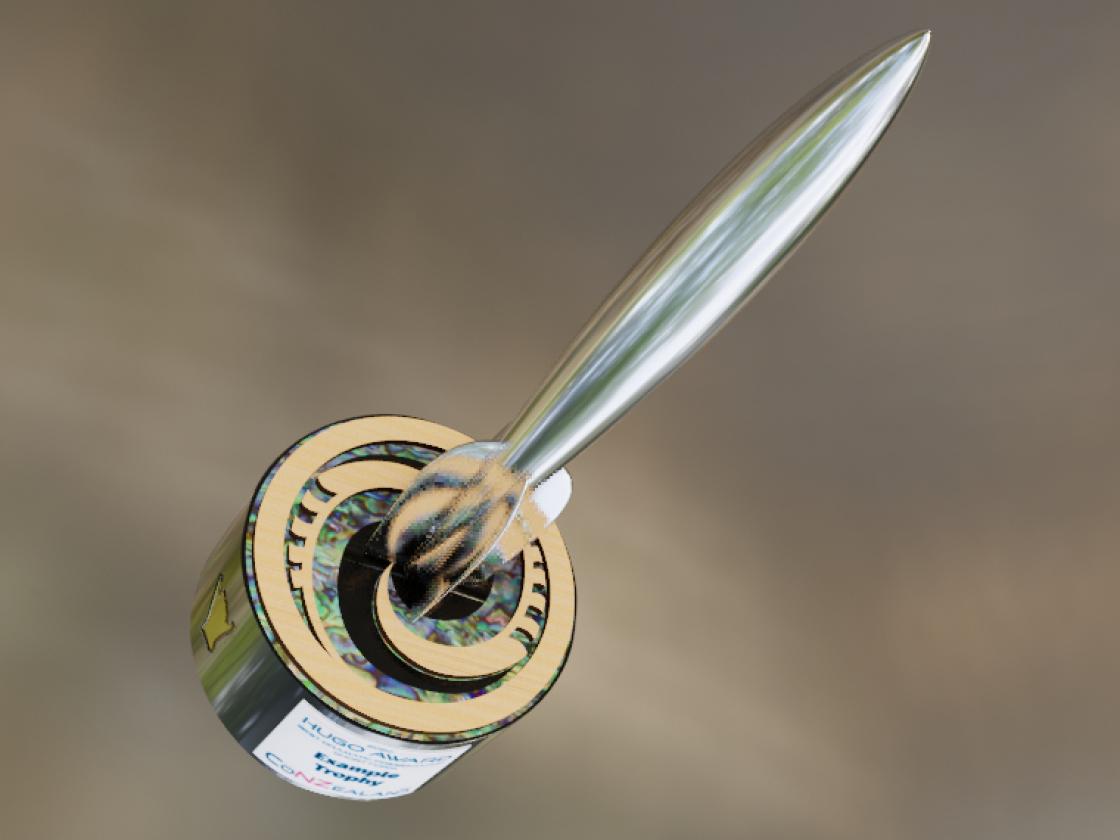
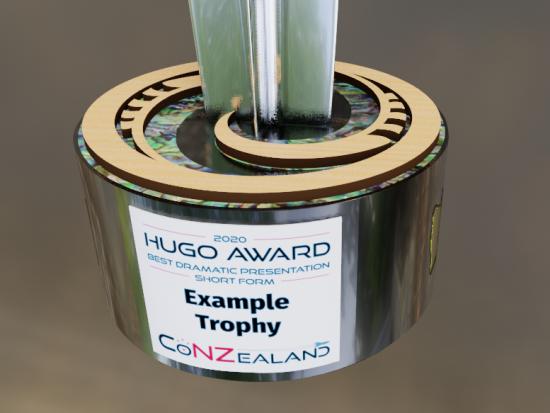

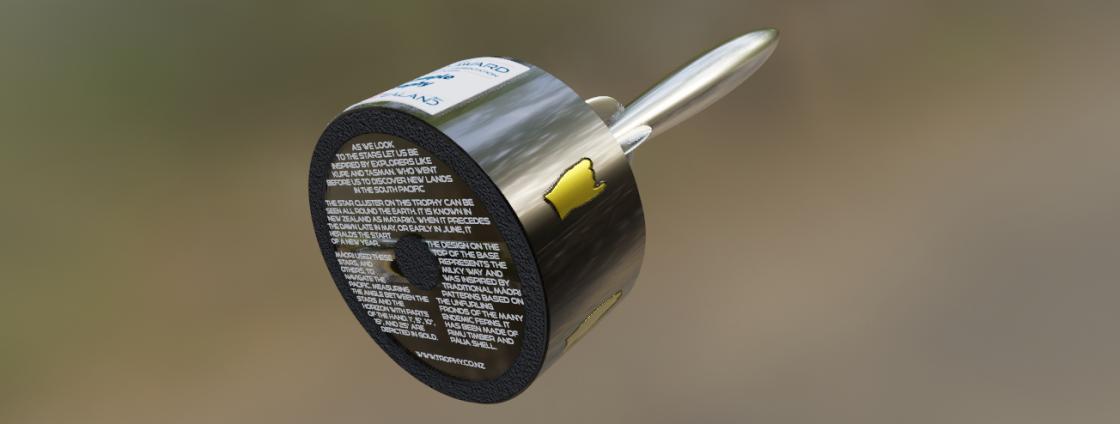
Add a remark